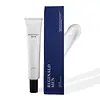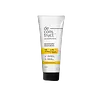What's inside
What's inside
 Key Ingredients
Key Ingredients

 Benefits
Benefits

 Concerns
Concerns

 Ingredients Side-by-side
Ingredients Side-by-side

Water
Skin ConditioningAloe Barbadensis Leaf Extract
EmollientGlycerin
HumectantUrea
BufferingPanthenol
Skin ConditioningGlyceryl Glucoside
HumectantSqualene
EmollientSodium Acrylates Copolymer
Lecithin
EmollientAlpha-Glucan Oligosaccharide
Cleansing1,2-Hexanediol
Skin ConditioningSodium Hyaluronate
HumectantPotassium Hyaluronate
Skin ConditioningSodium Hyaluronate Crosspolymer
HumectantSodium Acetylated Hyaluronate
HumectantHydroxypropyltrimonium Hyaluronate
Hydrolyzed Hyaluronic Acid
HumectantHyaluronic Acid
HumectantHydrolyzed Sodium Hyaluronate
Skin ConditioningSodium Retinoyl Hyaluronate
Zinc Hydrolyzed Hyaluronate
HumectantAscorbylpropyl Hydrolyzed Hyaluronate
HumectantAscorbyl Propyl Hyaluronate
Skin ConditioningDimethylsilanol Hyaluronate
HumectantPentylene Glycol
Skin ConditioningButylene Glycol
HumectantSodium Benzoate
MaskingPropanediol
SolventLaminaria Digitata Extract
Skin ProtectingCetyl-Pg Hydroxyethyl Palmitamide
Skin ConditioningCeramide EOP
Skin ConditioningCeramide Ng
Skin ConditioningCeramide NP
Skin ConditioningCeramide As
Skin ConditioningCeramide AP
Skin ConditioningPotassium Sorbate
PreservativePolyacrylate Crosspolymer-6
Emulsion StabilisingSodium Gluconate
Skin ConditioningWater, Aloe Barbadensis Leaf Extract, Glycerin, Urea, Panthenol, Glyceryl Glucoside, Squalene, Sodium Acrylates Copolymer, Lecithin, Alpha-Glucan Oligosaccharide, 1,2-Hexanediol, Sodium Hyaluronate, Potassium Hyaluronate, Sodium Hyaluronate Crosspolymer, Sodium Acetylated Hyaluronate, Hydroxypropyltrimonium Hyaluronate, Hydrolyzed Hyaluronic Acid, Hyaluronic Acid, Hydrolyzed Sodium Hyaluronate, Sodium Retinoyl Hyaluronate, Zinc Hydrolyzed Hyaluronate, Ascorbylpropyl Hydrolyzed Hyaluronate, Ascorbyl Propyl Hyaluronate, Dimethylsilanol Hyaluronate, Pentylene Glycol, Butylene Glycol, Sodium Benzoate, Propanediol, Laminaria Digitata Extract, Cetyl-Pg Hydroxyethyl Palmitamide, Ceramide EOP, Ceramide Ng, Ceramide NP, Ceramide As, Ceramide AP, Potassium Sorbate, Polyacrylate Crosspolymer-6, Sodium Gluconate
Water
Skin ConditioningHydrogenated Olive Oil Unsaponifiables
EmollientHydrogenated Ethylhexyl Olivate
EmollientDibutyl Adipate
EmollientNiacinamide
Smoothing3-O-Ethyl Ascorbic Acid
Skin ConditioningPolyacrylate-13
Polyisobutene
Polysorbate 20
EmulsifyingGlycerin
HumectantDiheptyl Succinate
EmollientCapryloyl Glycerin/Sebacic Acid Copolymer
Skin ConditioningKojic Dipalmitate
EmollientPhenoxyethanol
PreservativeEthylhexylglycerin
Skin ConditioningC10-18 Triglycerides
EmollientSodium Acrylate/Sodium Acryloyldimethyl Taurate Copolymer
Emulsion StabilisingIsohexadecane
EmollientPolysorbate 80
EmulsifyingCitrus Junos Seed Extract
AntioxidantLactobacillus Ferment
Skin ConditioningScutellaria Baicalensis Root Extract
AstringentLactic Acid
BufferingTocopherol
AntioxidantSodium Gluconate
Skin ConditioningWater, Hydrogenated Olive Oil Unsaponifiables, Hydrogenated Ethylhexyl Olivate, Dibutyl Adipate, Niacinamide, 3-O-Ethyl Ascorbic Acid, Polyacrylate-13, Polyisobutene, Polysorbate 20, Glycerin, Diheptyl Succinate, Capryloyl Glycerin/Sebacic Acid Copolymer, Kojic Dipalmitate, Phenoxyethanol, Ethylhexylglycerin, C10-18 Triglycerides, Sodium Acrylate/Sodium Acryloyldimethyl Taurate Copolymer, Isohexadecane, Polysorbate 80, Citrus Junos Seed Extract, Lactobacillus Ferment, Scutellaria Baicalensis Root Extract, Lactic Acid, Tocopherol, Sodium Gluconate
Ingredients Explained
These ingredients are found in both products.
Ingredients higher up in an ingredient list are typically present in a larger amount.
Glycerin is already naturally found in your skin. It helps moisturize and protect your skin.
A study from 2016 found glycerin to be more effective as a humectant than AHAs and hyaluronic acid.
As a humectant, it helps the skin stay hydrated by pulling moisture to your skin. The low molecular weight of glycerin allows it to pull moisture into the deeper layers of your skin.
Hydrated skin improves your skin barrier; Your skin barrier helps protect against irritants and bacteria.
Glycerin has also been found to have antimicrobial and antiviral properties. Due to these properties, glycerin is often used in wound and burn treatments.
In cosmetics, glycerin is usually derived from plants such as soybean or palm. However, it can also be sourced from animals, such as tallow or animal fat.
This ingredient is organic, colorless, odorless, and non-toxic.
Glycerin is the name for this ingredient in American English. British English uses Glycerol/Glycerine.
Learn more about GlycerinThis is the synthetic salt of gluconic acid, a form of PHA and mild exfoliant.
It is mainly used to stabilize oil and butter formulations from going bad. Sodium gluconate is a humectant, pH regulator, and chelating agent.
Chelating agents help neutralize unwanted metals from affecting the formulation.
Sodium gluconate is water-soluble.
Learn more about Sodium GluconateWater. It's the most common cosmetic ingredient of all. You'll usually see it at the top of ingredient lists, meaning that it makes up the largest part of the product.
So why is it so popular? Water most often acts as a solvent - this means that it helps dissolve other ingredients into the formulation.
You'll also recognize water as that liquid we all need to stay alive. If you see this, drink a glass of water. Stay hydrated!
Learn more about Water